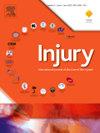FDA regulatory considerations for innovative orthopedic devices: A review
IF 2.2
3区 医学
Q3 CRITICAL CARE MEDICINE
Injury-International Journal of the Care of the Injured
Pub Date : 2025-03-22
DOI:10.1016/j.injury.2025.112291
引用次数: 0
Abstract
Novel and innovative orthopedic devices are needed to address clinical challenges in orthopedic practice. Obtaining regulatory authorization for such devices, however, can prove challenging. An inherent dilemma exists between innovation to address unmet needs and imitation to demonstrate substantial equivalence to a predicate device, which is required for the less burdensome 510(k) pathway. This article provides both an overview of highly innovative orthopedic devices over the last 10 years as well as considerations for FDA regulatory pathways and programs available to manufacturers of such devices. A review of 20 innovative orthopedic devices receiving Breakthrough Device Designation and/or a De Novo classification found that devices had diverse features and applications, but did possess shared technological trends including bioresorption, flexible components, and new substance/material use. A review of all new orthopedic devices authorized through the three major regulatory pathways in the last 10 years was also conducted. Spinal devices represented the largest share of recent orthopedic devices (38 % of 510(k) clearances and 25 % of De Novo classifications). Across all three pathways, decision time was on average around 30 % shorter for orthopedic devices with a Breakthrough Device Designation versus those without, though differences were not significant. New orthopedic devices authorized in the last 10 years were found to be highly reliant on the 510(k) pathway, with a 99 % utilization rate. However, the FDA Breakthrough Devices Program and De Novo pathway offer opportunities specific to innovative technologies, such as expedited review and potential market competition protection, as demonstrated through specific case studies in this review. As these FDA initiatives continue to evolve and manufacturers continue to take advantage of these opportunities, orthopedic device development, which has primarily prioritized incremental innovation, may too evolve to produce more breakthrough innovations.
求助全文
约1分钟内获得全文
求助全文
来源期刊
CiteScore
4.00
自引率
8.00%
发文量
699
审稿时长
96 days
期刊介绍:
Injury was founded in 1969 and is an international journal dealing with all aspects of trauma care and accident surgery. Our primary aim is to facilitate the exchange of ideas, techniques and information among all members of the trauma team.

 求助内容:
求助内容: 应助结果提醒方式:
应助结果提醒方式:


